CoX: Vent
Time to time, I write up an explication of characters I’ve played in RPGs or made for my own purpose. This is an exercise in character building and creative writing.
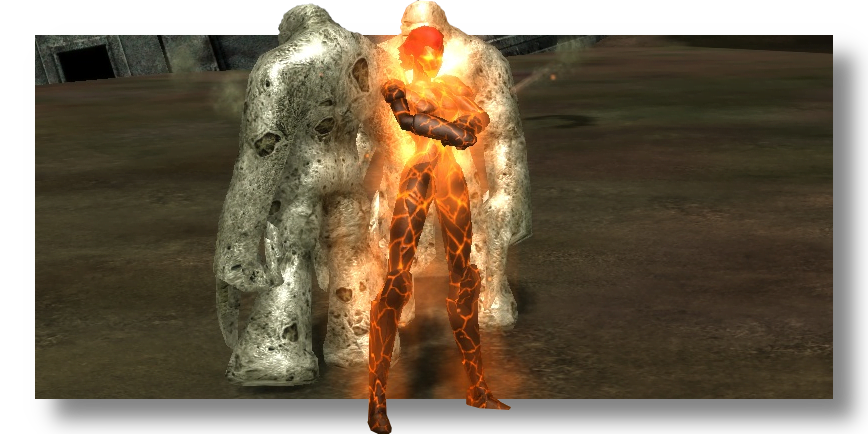
“So, are they fire, or rock?”
“Oh my god, they can’t be both,”
“Or something else, in between?”
“They’re going to have to make their mind up.”
It’s tough being a lava-powered enby. Humans can handle the ‘my skin turns into lava’ part but they get all weird about the ‘gender’ thing, like that’s somehow the big deal. Elementals don’t know what the gender thing is even about, but they’re also really bad company when you talk about music and fashion.
Vinn’s doing the best they can, with what they got.
Continue Reading →Queerer City
You know that game I talk about, from time to time, that game I play, that game, you know that game, that lets you play a character that you create, made through an immersive character customisation system, then you get to choose how they look, get to pick their graphical representation, get to choose maybe how they relate to the world, some beloved contacts and friends and factions that mean a lot to them, and how there’s a lot of fanart of characters made in that game and how they’re all about getting to express and explore this element of a wonderful world with this really exuberant kind of approach to expressing yourself? That game? You know? Final Fantasy XIV?
I kid, I kid. Final Fantasy XIV is a fascinating game full of interesting stuff, I’m told, and it’s fun, I’m told, and I should give it a shot, I’m told. It’s definitely got all the makings necessary for this particular phenomenon – though I don’t imagine it will cross the final threshold necessary any time soon.
See, what I want to talk about here is how a game dies, and what rises out of it.
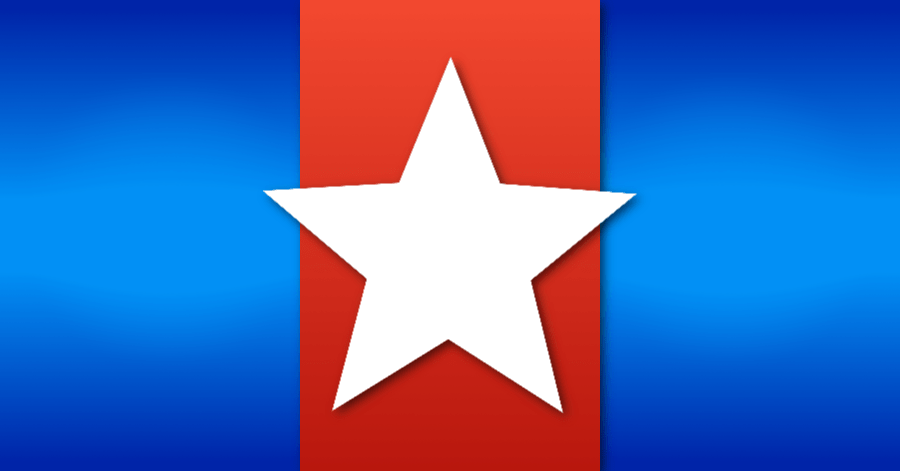
CoX: Boss Rush
Time to time, I write up an explication of characters I’ve played in RPGs or made for my own purpose. This is an exercise in character building and creative writing.
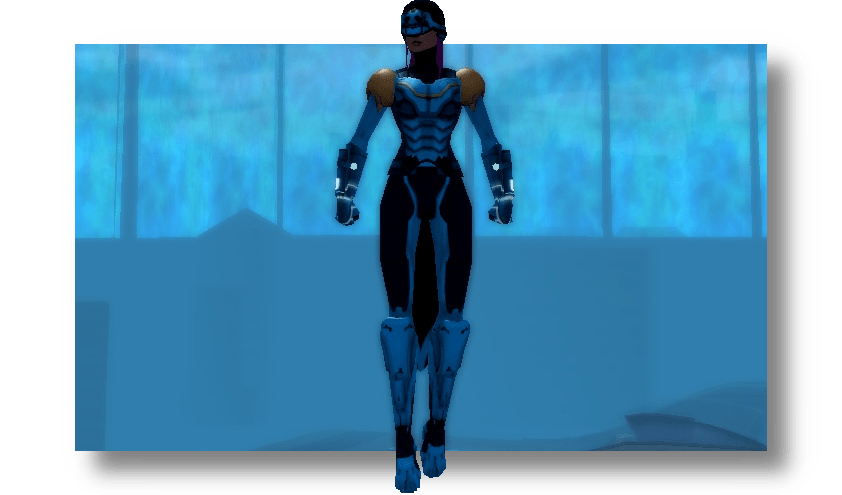
All the power in the world doesn’t matter if your mind can’t bring it to bear. There’s this whole study of the way brains ‘chunk’ information, neuroheuristics, the way the brain sets up tools for learning and managing what it’s learning about.
Rush was able to make the system containing the hardlight point nanites – but she needed a heuristic to manage the information. The result is her immensely powerful, immensely flexible tech rig, a kind of super suit made to be lightweight, transportable, and heavily adaptable, as long as the wearer can manage to explain to the device what she needs.
The gamer nerd and the tech geek collided, and thus, the hero identity Boss Rush was born.
Continue Reading →CoX: Carcer
Time to time, I write up an explication of characters I’ve played in RPGs or made for my own purpose. This is an exercise in character building and creative writing.
In this case, this character’s backstory requires some Content Warning for parental abuse, and themes of mental health and trauma, as well as uh, Death Gods?
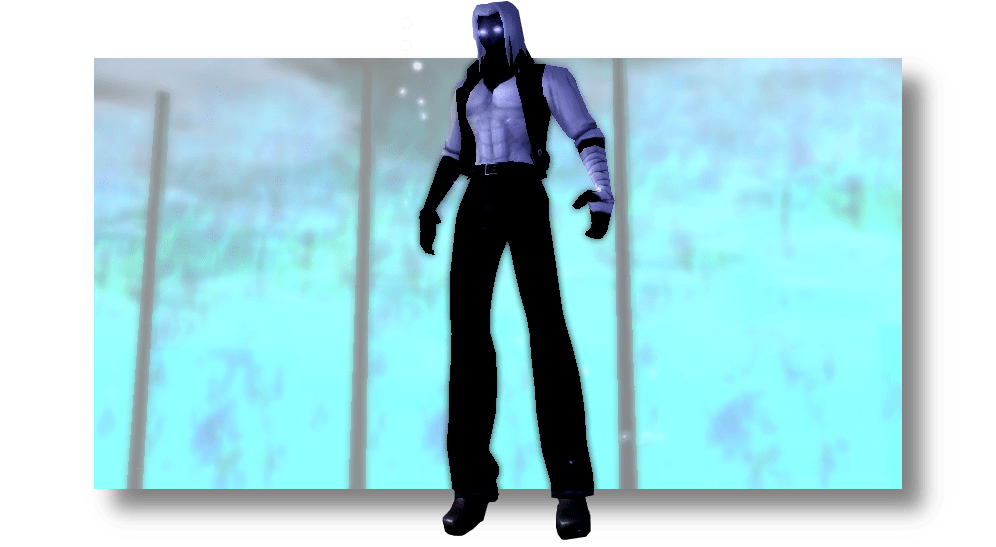
The vitals; Poor and poorer for it. Born in Croatoa. Raised in Kings. Single father. Bad father. Empathy powers, started in high school. Got hurt. Got insular. Had to deal with his feelings, and everyone else’s feelings.
Then Mot happened, and he had to deal with nothing but Mot’s feelings.
Carcer, only name given, has done some dumb things to try and deal with his situation. Ink black skin, a death god’s powers, the damage persisted after the sealing of Mot. A damaged, surly, aggressive boy, he’s been trying to use what he’s got to do some good.
Continue Reading →CoX: Brambles
Time to time, I write up an explication of characters I’ve played in RPGs or made for my own purpose. This is an exercise in character building and creative writing.

In the fey realms, there are courts; courts overseen by great powers, lords of realms or even of ideas themselves. The greatest and vastest powers, strange and incommunicable, are overseen by the Great Courts, with the fey royalty, the names people know, the names so important that they slip through even into the mortal’s realms.
But one court, the Court of Voids, lays hidden and secret, ancient beyond even the knowing of the Fae. A mystery of mysteries, with its Secret Queen, She Who Touches As Iron. Precious and few are the fey of this court, paying fealty to this secret queen, with blessings of stealth, secrets, combat and healing for the maimed.
His name, he says, is Brambles, and he lays fealty to this Secret Queen. But the Secret Queen wants secrets and justice – and where better to find those than the City of Heroes?
Continue Reading →CoX: Cearmaid
Time to time, I write up an explication of characters I’ve played in RPGs or made for my own purpose. This is an exercise in character building and creative writing.

Just a boy in a bar with a beer.
Continue Reading →CoX: Lifts
Time to time, I write up an explication of characters I’ve played in RPGs or made for my own purpose. This is an exercise in character building and creative writing.

The conventional vision of the hard suits is that they’re hardware that makes everything else easier. Which, yes, technically, true; they can do things like manage gravity extenders or hard-light impact gauntlets. A hardsuit lets a normal human operate on the level of a superhero.
The problem is the suits themselves are heavy hard suits. They’re only doing so much of the work – to pilot one at peak efficiency, you have to be an extremely accomplished athlete, fit and extremely strong. And you can take the training and the parts, and strike out without them to much of the same effect.
When people first meet the ex-Hardsuit pilot – the hard-body hard-head Lita Kinamo – the question ‘What’s she like?’ is asked. The answer’s always the same: She lifts.
Game Pile: Homecoming Issue 27
Hey, this December, I’m going to try and make sure that I talk a little bit about games that you don’t necessarily need a lot of money to play. I liked how I did some folk games last year and I thought this year, since social distancing is a thing, that it was worth my while pointing out some ways you can have fun, online, and ideally socially.
This is obviously not the easiest thing in the world, but the good news for me at least is that just in the tail end of November, City of Heroes: Homecoming launched a whole new issue, ‘Issue 27’ and that makes it a great time to talk about that, and how to get involved if you want to.
CoX: Heartbeep!
Time to time, I write up an explication of characters I’ve played in RPGs or made for my own purpose. This is an exercise in character building and creative writing, and hopefully interesting.
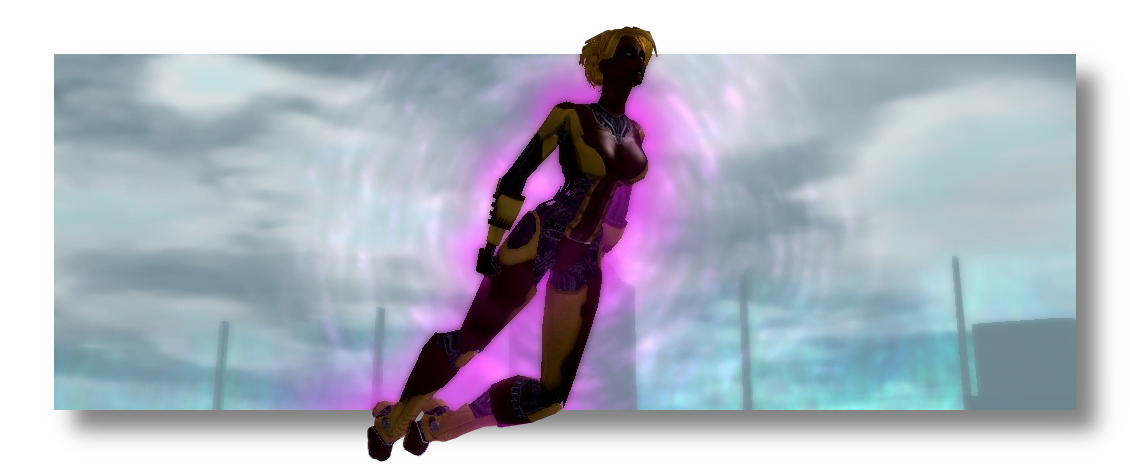
Dot is a bright, funloving, extremely geeky young lady, who’s prone to odd stutters and occasional lapses in conversation. This is because while she is a geeky young lady with a bright personality, she’s also a superpowered Clockwork drone from Praetoria that was handled through a variety of somewhat dubious projects on her arrival.
It’s not that she’s ‘really’ a robot. It’s not that she’s ‘disguised’ as a girl.
She’s a cute girl.
And she’s a robot.
And Dot has decided the kind of cute girl she wants to be is also a crime-fighting superhero robot.
CoX: Offshore
Time to time, I write up an explication of characters I’ve played in RPGs or made for my own purpose. This is an exercise in character building and creative writing, and hopefully interesting.

There’s a lot of old gods in the deep.
Calling Offshore a sharkboy is true, sure; he’d call himself a Deep One if you asked him to, because that’s the English word his people use for what they are. If you asked where he’s from, he’d say Devil’s Reef, which, yes, is a name for one of the dozens of small, treacherous coves up on the New England coast.
It’s not that that story never happened – though it’s not his Devil’s Reef. It’s that it wasn’t his story; it wasn’t the story of his people, who are as different as other surface people. If you ask him who his people worshipped, he’d tell you a name, then tell you the translation:
Poseidon.
Offshore knows the ocean is important, knows Poseidon’s will is important, and he has a reason to believe that in this City of Heroes, where Greek Gods are seen and echoed all over, there’s a reason for him to be here, rather than down, in the old and glimmering libraries.
CoX: Xixecal
Time to time, I write up an explication of characters I’ve played in RPGs or made for my own purpose. This is an exercise in character building and creative writing, and hopefully interesting.
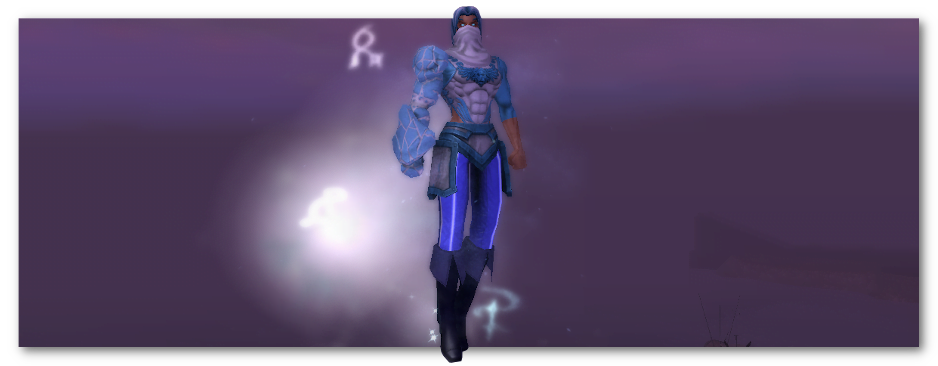
Not all hells are hot. Oranbegans, for example, knew of a hell that was frozen, an intense jagged land of ice and pain, numbing and biting. It’s the home of the hellfrosts, and shards of that frozen hell extrude through the power of the gods to this world.
We all get our power from somewhere. There’s a title, long since handed down, a title designed to sap even the tiniest power from the name of the beast that wore it once, slumbering deep beneath a trap of ice and water. Nightmares of the old sea, the dark and dreaming deep, all woven together, in the name of the Xixecal.
To most? He’s a frost mage. Nice guy. Knows things. Knows people who know things.
And every spell he casts is sapping the strength of a dreadful beast that can never be permitted to awaken.
CoX: Shaping Moonheart
A few months ago I mentioned Moonheart, my Resurgence Magical Boy, and how I figured I’d go in on him when I had the chance.
Well?
I have the chance.
Okay, first up, we’re talking about a character I roleplay on the game City of Heroes. This is a fakey-madey-uppy superhero I pretend to be in my free time. If you’re looking at this and missed this introduction, you might be going ‘hang on, what story is this from?’ and ha ha, you fool, I’ve got you to read about a thing I made up.
Gotcha!
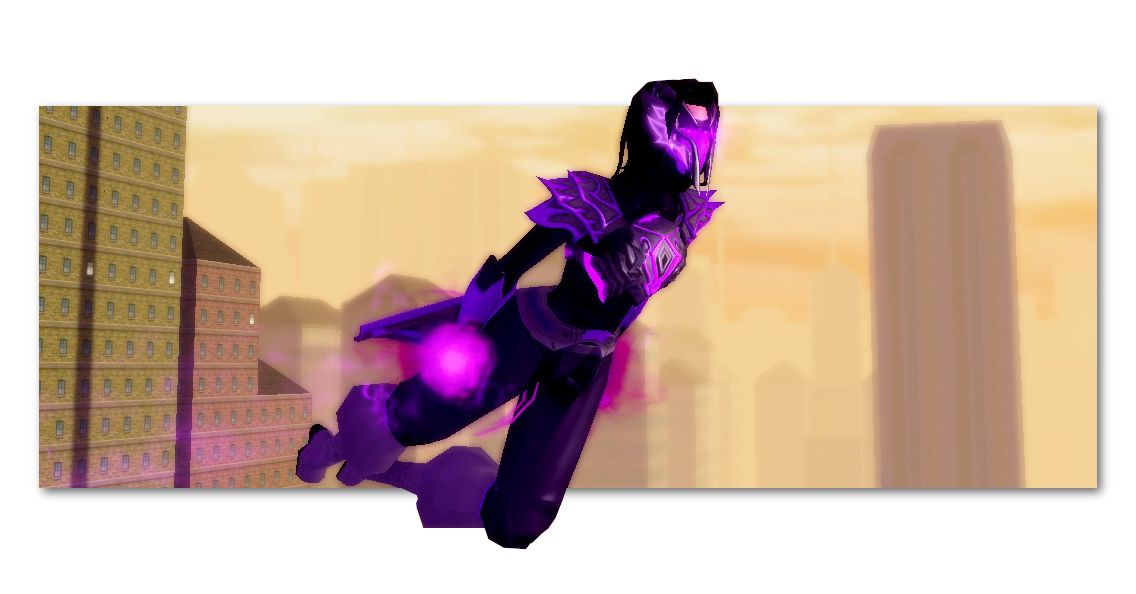
Moonheart is a young man from that category of legacy heroes; not directly, as neither parent was Moonheart before him, but as someone who inherited powers from each parent. If you meet him on the street, chances are you might read him as a woman, because of his hips and hair and his not exactly packing the masculine codifiers voice. He’s what might get referred to as a femboy – he’s cis, but his presentation is pretty girly.
(And that’s it, mind you.)
Purpling Out A Warshade
I swear to god, my last fucking brain cell.
In City of Heroes, the game was – and is – pretty easy. The game was made to have a broad appeal to an audience that mostly liked playing with the costume creator, and at shutdown, over 50% of all characters made never reached level 10 of 50.
There was a gear system introduced after the game was live, a system designed to be optional to let players push their characters to a higher level. It was called the Invention system and it relied on interconnected sets of things in limited sockets. I’ve spoken about it in the past and it is not an easy system to grapple with.
This was, I repeat, optional. Then when that system appealed to players, the developers released another group of inventions that could only be used by characters at the level cap, at 50. This is content for a minority of players, mind you, and they found it worked well getting players engaged with the game, and it seemed to do well. They were known as ultra-rares in the game text, and ‘purples’ to the players. For some players, doing normal late-game content, a single purple drop could be sold on the market for enough money to satisfy your needs for good.

Another thing in the game was the presence of epic archetypes. If you had a level 50 hero, you could make one of two more types of hero characters – a Peacebringer or a Warshade. Of the two, the Warshade was the weaker and less popular. There were a lot of reasons why they were less popular, and you should totally explain to me why you think that is I promise I won’t ignore it because I don’t care and it doesn’t matter, but okay, this is the framing you need.
One day on the forums, a typical thread got kicked off; someone talked about how the game market was broken and it was too hard to meet basic needs and it was too expensive to function, a position that largely, I and other market people didn’t regard as very serious, because the market was very easy to make money off if you were patient and so on. It was a libertarian paradise – all goods were luxury goods and everyone had equal access to the means of generating capital.
Then Chris Bruce, aka Back Alley Brawler, responded to this thread, and pulled the vital quote from the start of the thread that we’d all missed:
I’m sorry, did you say it was too expensive to purple out your warshade?
This quote haunts me.
This quote is the kind of rhetorical bodying that I’m honestly afraid of earning. It is a statement from a position of such flawed base assumptions that even a reasonable sounding conversation can be formed around it, but to anyone who bothers to pay attention, it is completely farcical on its face. The most entrenched of entrenched players bemoaning the difficulty doing one of the hardest things that casual players were never expected to want to do, showing their populist position was just selfishness in disguise.
I worry a lot about when I explain things or share things or call for change that I’m not complaining about purpling out my warshade.
CoX: Burnwillow
Science fiction, fantasy, and the hyper-reality of genre media lets us explore things that aren’t real, or true, but make sense to humans who are used to things that are. We can set rules for the way a world is, and the audience is just going to go for it while you get around to explaining it.

Burnwillow is a superhero who I’ve had around for a while; first created back in the original City of Heroes, then expanded in the Generation 4 roleplaying space, and then remade in the new City of Heroes Homecoming, she’s had a lot of time to have her backstory revised. The person who made her story to start with and the person I am now are two very different people and know very different kinds of things about the kind of person she is. Tracing her origin, I think she may have been created as early as 2007, when the term ‘Burnwillow’ came up from the Magic: The Gathering set Future Sight.
Continue Reading →Enby Signalling In Superheroes
Hey, here’s a thing that I find difficult.
Content warning: I’m not nonbinary, and I’m going to talk about nonbinary identities. This is naturally fraught and I’m not going to pretend that I’m an expert, or that I can’t make mistakes. Cool? Cool.
Iron Angel
I tried, hard as I could, to not talk about this this month.
Media is very often, these days, replicable. If I liked Voltron I can tell you to go watch it and usually you’ll find the same show and be able to reference the same text even if you had wildly different responses to it. If I talk to you about D&D or tabletop games, I can talk to you about types of experiences the game makes possible. I’ll sometimes show you characters I built in those spaces, because I can provide you insight into how I did that and what that means.
Once, when writing about Saints Row 3, I remarked that whatever I thought of the game was hard to tease out when I’d had so much fun playing it with my friend Casey. I rated Casey five stars, and the game was just a way to connect there. You can’t download my friend Casey, though, though I’m sure she’d be happy to charge you $15 for the download code.
In this case, in smooch month, I kept circling around how fantastically hard it was to get good, interesting, engaging romantic media in games to talk about, because games do it badly. But if they do it so badly, why is my context seemingly aware of ‘good’ romance that these games aren’t hitting? What’s forming the foundation of my vision of good?
And well, that’s where we get to non-replicable media, and my friends. Specifically, the romance stories I’ve had in RP spaces, especiallythe stories in City of Heroes have been absolutely excellent, and one example of this I want to bring forward is the incredible character Zex, aka Iron Angel.
Zex is a character I’ve mentioned on the blog in the past; she was a neuroatypical character who told other characters she was a sociopath, which led to them assuming that was her neuroatypicality, including me. The last day the game was alive, the player stated that she wasn’t a sociopath – she was just neuroatypical in a different way, and impersonating sociopathy was a way to make other people respect her neuroatypicality rather than having to explain it every time.
Zex has been in a relationship with a character of mine, Cearmaid, pretty much since late 2011. They met, they flirted, they dated, they engaged, they had a breakup, they got back together again, they moved in together, they got married, and they took up careers as superheroes working together and apart to make the city they lived in a better place. Literally all those details are however, plot points worth explaining and expanding on their own, because for example, the breakup happened when a rogue AI created by Zex’s own paranoid internalised dissasociation turned into a global-threatening supervillain that used Cearmaid’s trust in Zex to launch him into space where he crashed into the moon, and that’s one of many plot points.
Zex is interesting. Zex is thoughtful. Zex is fantastically difficult to communicate with. Cearmaid carries around his phone so he can draw diagrams of his ideas. Zex, noticing that he responded to a pretty girl wearing a baseball cap just recently attempted to seduce her husband by wearing multiple hats, because hey, more is better, right? And all this is while she’s also doing her job as a former villain turned superhero in powered armour who flies around punching baddies, saving the day and rescuing people because she has deduced that doing good is the logical thing for her to want to do.
Zex is neuroatypical, has physical disabilities (she has no feet, amongst other problems), is full of anxiety, afraid of dogs and needs comfort, communication and reassurance on a regular basis and yet the relationship between her and Lock has always felt like a meeting of equals, engaging in different ways with a complicated world in which they live.
I love this character, and I am kinda sad that I can’t help you, random strangers, enjoy or appreciate romances – yes, even a het romance! – where the characters involved are interesting, and good, and fun and learning about them is interesting and every day they interact, they get to enjoy one another and engage with one another a little more.
I am blessed to have some truly fantastic RP partners around me, and in this smooch month, I wanted to just share with you an example of how great romance in games can be, when the game lets players create in shared, respectful, engaged spaces.
CoX: Rift Girl
I’m a superhero fan, which is to say I’m someone with a lot of very firm opinions the way the superhero media industry is just ruining everything, and completely messing up. This is a natural part of the progression as you get older, but I at least am at the point where I can bring myself to acknowledge it’s much more I don’t like this rather than this is good or bad storytelling.
Comics love weirdo aliens that are human-mindset compatible (like M’gann M’orzz). Comics love alternate dimension characters that come from a different universe that’s somehow meaningfully mostly like ours (like Power Girl). And despite loving M’gann and Peej, I really dislike these two ideas. In a shared roleplaying space like City of Heroes, you don’t get the leeway to just tell people hey stop making characters I don’t like, though, and I’ve come to terms with that.
When presented with a problem like this, though, a good impulse is to work out why things are different, work out what you’d do to make the thing you don’t like work in a way you do. Which is why I wondered how I could make a Suspiciously Human Alien or Extradimensional Person in a way that didn’t make my brain flip sumersaults at the math involved.
What I got out of it is Rift Girl.
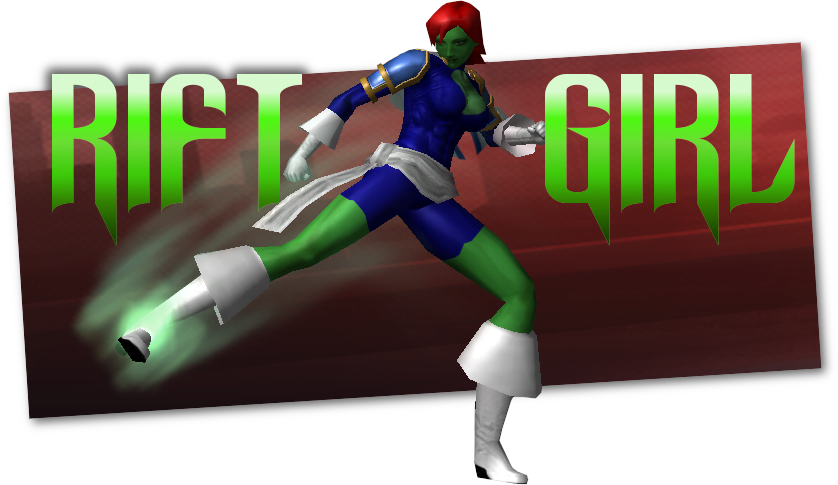
First up, here’s her in-game bio:
“But what are we doing here, at home, to fight the dreadful menace of The German Imperialism? Why, there’s some, like the top-secret RIFT project, storing away examples of the finest cities of the 20th century, in alternate dimensions where the people can grow and thrive, and become brilliant bosch-bashers! And as long as there’s funding, there’s no way to lose track of them, or see them fall to the work of the Hun! Stay tuned, for partial excitement!”
– Project RIFT explained, unreleased educational film, 1939Madison Max came from a place that’s a bit retro, a bit far away, and plenty, plenty weird. But that doesn’t matter – what matters more, to her, is that she’s here, in Paragon, to be a hero, and contribute to the fight against fascism!
Alternate dimensions and alien cultures are great if you want to give a character a kind of contained metaphysics. You don’t have to explain how they relate to the things in our world or why they may have missed something or other, you can just say that those things don’t exist where they’re from. These are societies you have complete control over, and it means if you want a character to come from a place where things work differently and people just have to accept it, you can. Consider a lot of our societal ideas we have that can be just different in a different society. Ideas like marriage, gender, violence, heroics, education or capitalism can be wildly different if you control a different space.
Alternate dimensions bug me though when they’re just one of a million options because it opens up too many questions for me. After all, why this and not that. Why are these changes able to have such wild transformations? Alternate dimension are written in between the space where they’re not realistically similar (in this world, one flower evolved to be peach instead of purple, and everything else is the same) or realistically different (if the mass of earth’s trajectory was off by a meter a billion years ago, literally none of anything would be ‘there’ when you went to reach into the other dimension). How do I get an alternate dimension that’s meaningfully like what we have here?
My idea was to make the alternate dimension a dimension built out of this one, and that gave me the idea I wanted: Nonsense Wartime Propoganda Super Science!
Rift Girl’s world is a pocket dimension made in the 1940s as part of the War Effort against the Super Science Nazis of the superhero universe. We blame so much stuff on this era of science (just look up the weird stuff people believe about the Philadelphia Experiment), and that gave me an aesthetic to start from. Bonus, it let me talk about the natural followup to a good thing (fighting Nazis) and the way our cultures managed that project (not preventing more Nazis later).
Rift Girl is from a city that was built as a self-sustaining environment in the desert in the United States, then super-science blinked into its own little parallel dimension where they could set the rules enough to make sure that entropy wasn’t going to be a big problem. The idea was that these cities would work as both safeguards against Nazi invasions of countries, and places to recruit and train the best possible Nazi-fighters ever. Then, because of funding cuts, these entire cities were lost to paperwork and time, and the Rift Cities fell out of contact with the Primal Earth. Some were decommissioned properly after only a few years, and one, Maddie’s home, was forgotten, lost in the shuffle, or deemed ‘too hard’ to recover.
Fast forward Some Years, and Rift City contacts Primal Earth, opening a portal they developed on their own with their limited materials, and send through messages and an Emissary – Madison Max. Thanks to a delay on broadcasts arriving in Rift City, she thinks it’s Prime Material Year 1999, and party for the millenium, even made herself some of those party glasses, and oh yes, to beat the shit out of Nazis.
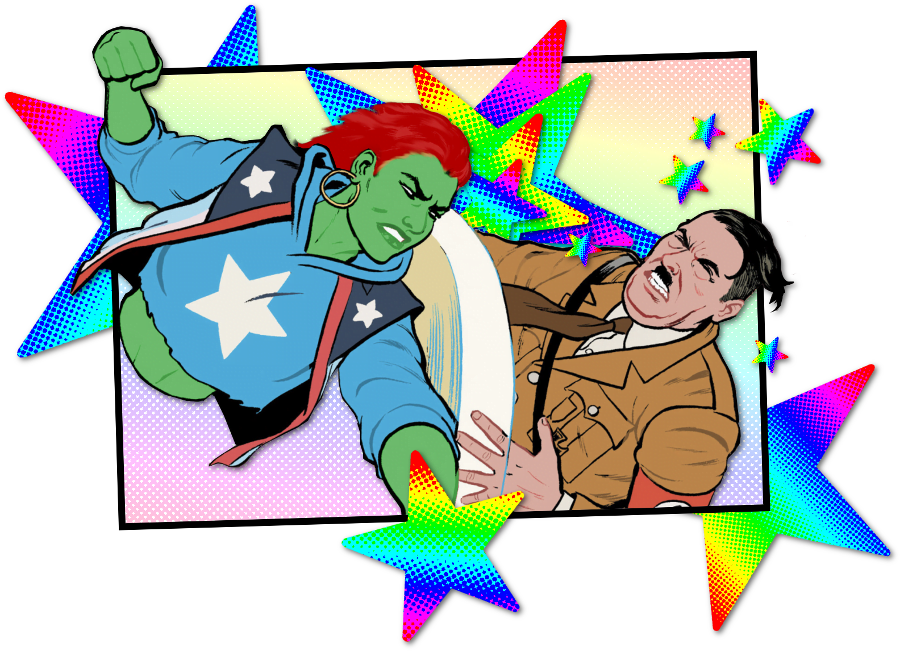
Madison was chosen for her task because she was basically a super over-achiever student, someone who was both obsessed with the Primal Earth broadcasts they were able to decipher and well-trained and disciplined. Smart, educated, extremely strong in a super-sciencey way, and given special, strange, rift-warping powers by having broken the ‘seal’ on the Rift City tunnel to Prime Earth, she’s ready to be a full blown superhero, punching Nazis and Saving the Day, just like all the TV shows she’s been bootlegging from Primal Earth have shown her.
Also, thanks to the way light worked in Rift City, she – and the rest of the Rift City people – have no idea that the time spent in the Rift has made them all green, or rather, that anyone is any colour other than green. She thought everyone she was on TV was green, just like her, and now she’s having to adjust to that. Also the twenty year time gap. Also discovering that contrary to how she was raised, Americans think Communists are bad, even though they fought Nazis so well. That’s weird.
Mechanically, Maddie is a Radiation Armour/Street Justice Tanker. In a way, she’s a pastiche together of Superboy and Miss Martian from Young Justice, a super-strong but visibly strange person from another world. The City of Heroes universe has four clear examples of actual honest-to-god fascists to fight and you know, that’s on my mind lately.
Building A Character in City of Heroes
I love building characters in City of Heroes.
This is going to be mechanical, by the way, not narrative – I have lots of views about how to build a character in a shared roleplaying space. This is about how I prioritise stats when I’m building characters in this game.
For those not familiar, City of Heroes characters get a number of abilities that let you do things, and then they get ways to improve those things. This is typically divided into ‘powers’ and ‘slots.’ Slots can hold things that improve things the power do – accuracy, damage, the time it takes to recharge, the duration of effects like stuns or holds – and so powers you want to do lots of things, you’ll give them lots of slots. You can’t just fill them with the same effect because there’s diminishing returns after the first two, which means powers tend to get a little bit of one thing, a little bit of another.
Now, that’s probably all that you’re going to get out of this unless you’ve played the game, because this is a big, complex system. If you really have no idea about it, the rest of what’s coming is going to be gibberish, so I’ve put the useful conclusion to all that here up front:
What we can see then is that – perhaps accidentally – this great big confusing mess of a game, that when you have a lot of systems at work, even if you have a fairly simple, linear method of progression (defeating baddies), there’s still a lot you can do to make the individual choices of a player expressive. Players can build towards their priorities.
Now, you might not be making an MMO, but you might be making a tabletop RPG. If you’re building in the modded space of games like Pathfinder or 13th Age, you’re in a similar space, and that’s when the time comes to look at your own creative efforts rather than necessary in terms of perfect balance, as instead about competing balance. See if you’re presenting players with enough choices that character building is full of interesting choices.
Also, if there’s something players should just have, then just… give it to them.
Now, if you want to keep going, here we go:
Decemberween: City of Heroes!
City of Heroes is back.
City of Heroes is back and based on these past six months, it might be able to last.
I don’t know how to tell you how unnecessarily happy this makes me.
The game is still a clunky, 2004 content churn of a game. It’s a space full of people who, like me, didn’t get over losing it last time, and have kept their personal roleplaying stories going, or just brought back old ones, and that means I get to see a bunch of people I genuinely hate and never wanted to see again running around and having fun but it’s okay because City of Heroes is back!
As far as free games go, a customisable superhero MMORPG is a pretty sweet one to offer, and here’s the link. I don’t think it’ll be to your taste – it’s a limited appeal kind of work at the best of times – but it’s something I’m so glad to see around, and part of what I love about it is that I get to play this game again and it somehow survived.
There was a lot of anger at the discovery of a secret server this year. It was a big deal, and a lot of people close to me were super pissed about it, because the idea that they didn’t get to play, but someone did was really unpleasant. But what stood out to me was the idea that a population of what, a few hundred people were able to keep this kind of thing a secret, even through breaches on Reddit and multiple attempts to attack it.
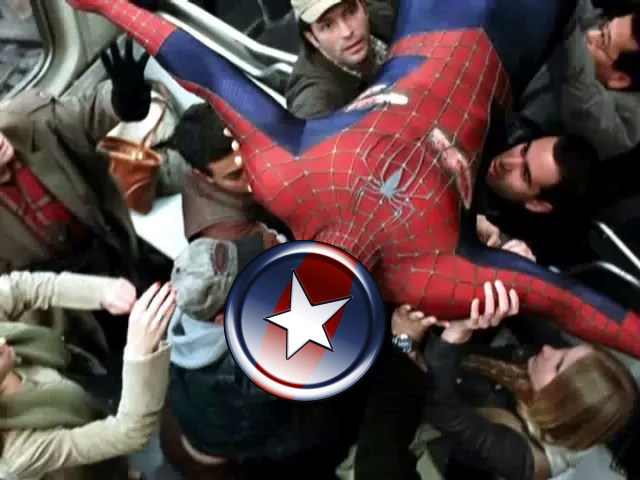
I don’t think Corporations are good. I don’t think NCSoft, despite making a thing I love, are a good company. I don’t think that Nexon, the company that owns NCSoft are good, and I don’t think Tencent, the company that wants to buy Nexon are good. Simply put, I do not see a reason to want to defend a corporation in face of people taking things from that corporation. I don’t like the Disney Vault for example, and I don’t feel there’s any shame to be had in making a corporation surrender control over something. Corporations aren’t the heroes. They don’t need us to stand up for them.
We sure don’t want to be their unpaid enforcers.
Instead, for years, years, people kept that secret.
Like you would, for a superhero.
Digital Archaeology at Paragonwiki
I mentioned that I’ve been looking at the rehabilitated City of Heroes, and that it’s for work. This is ostensibly true. I’m obviously also playing a videogame I love to bits and finding people to pretend to be a superhero with. I have a spreadsheet set up, and boy, that’s the kind of thing that leads to silly behaviour.
How silly?

What I’ve done to start with is a big sheet that starts with a bunch of fields, then as I need to track things about characters that aren’t unique, I just add a column and put stuff in it. That means sometimes I get charts as a result like this, sensible chart that shows my current distribution of character origin. Think of it as a kind of character genre: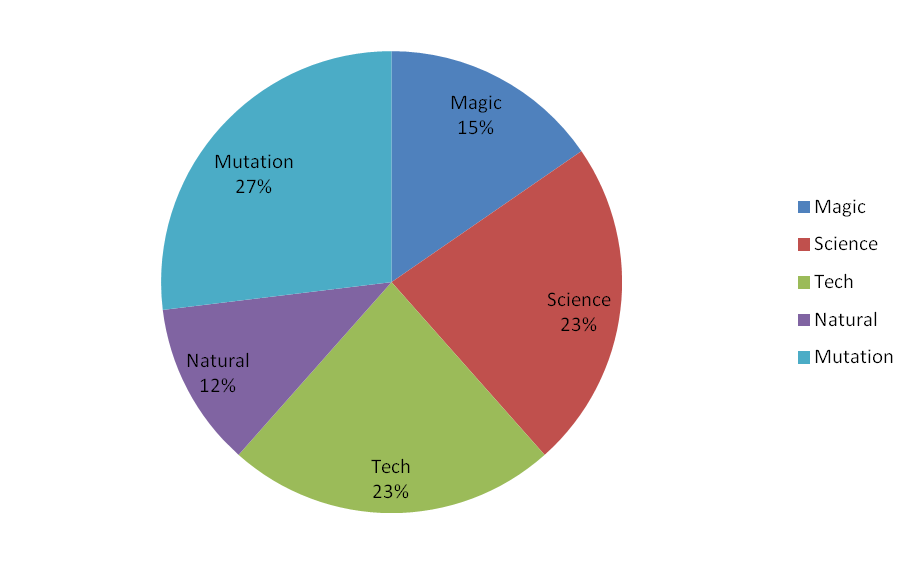
That’s sensible! That makes some sense.
Then there’s this:
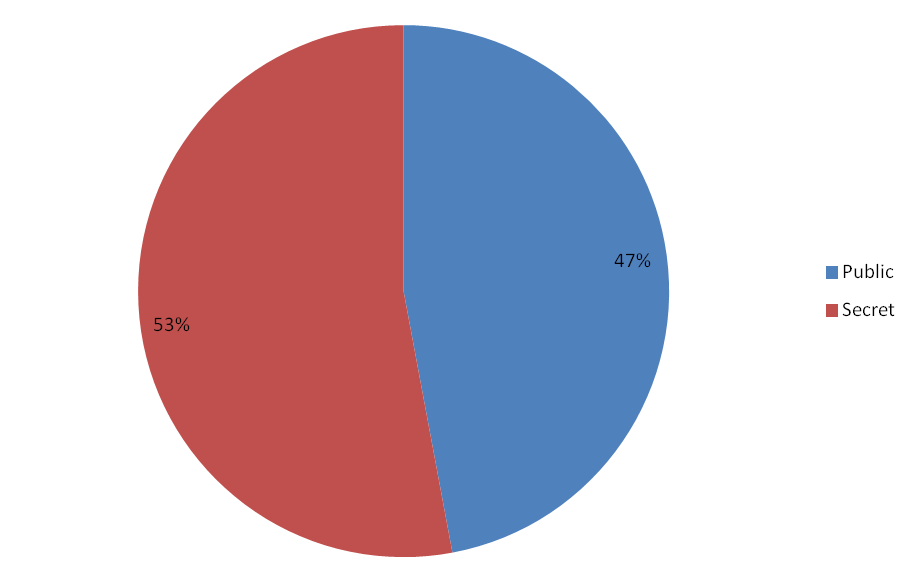
A chart mapping how many of my characters have secret identities versus how many have public identities. Or there’s this chart:
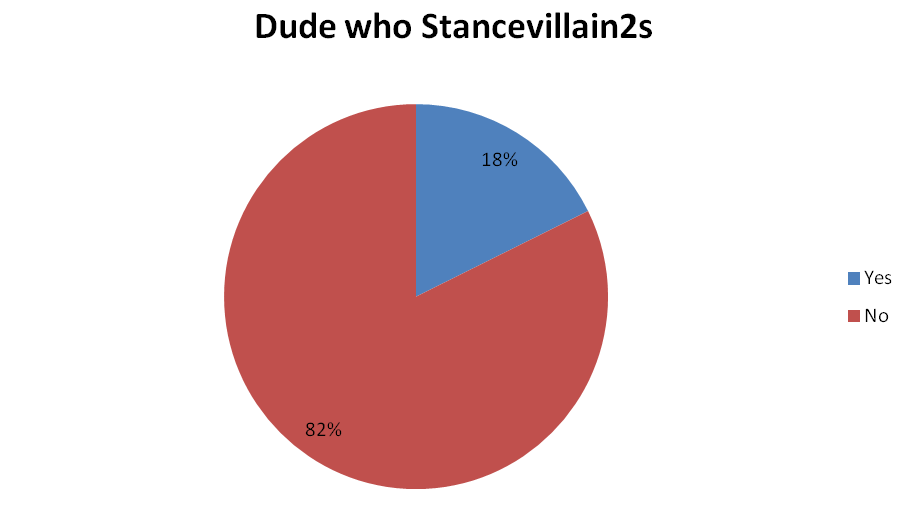 Which of my characters are men (dudes) who use the StanceVillain2 emote as a default standing position around people. That’s this emote, here, which I was able to obtain from the Paragon Wiki really conveniently, because that was archived.
Which of my characters are men (dudes) who use the StanceVillain2 emote as a default standing position around people. That’s this emote, here, which I was able to obtain from the Paragon Wiki really conveniently, because that was archived.
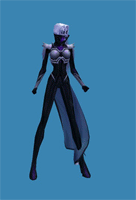
When I started working on this new version of the game, I made a choice to not just replicate my old characters. I wanted to make sure I made new characters, or ‘corrected’ the powerset choices of older characters. A character who was built and levelled as a Dominator once might become a Brute this time. A character who was a Brute became a Tanker. Still, I wanted to play with the old looks I had, and update them, and play some of my old characters again – oh hey, another chart –
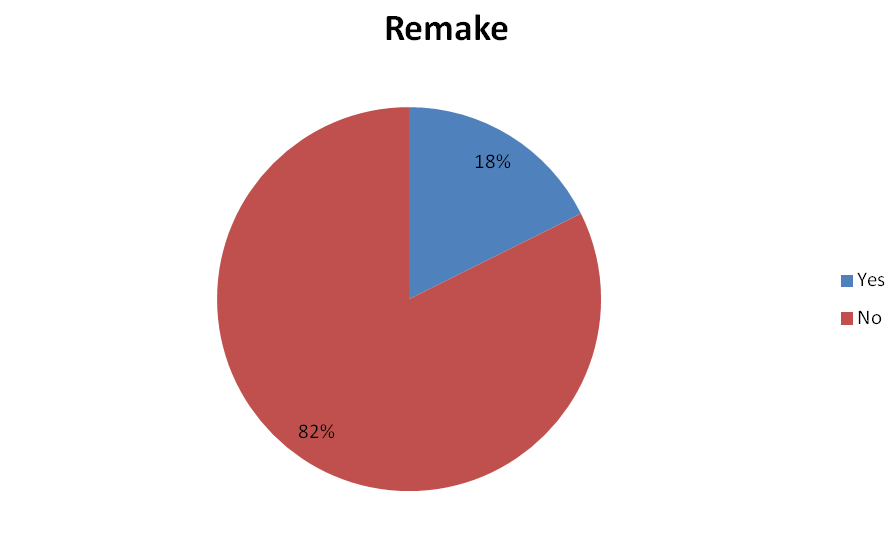
And then I realised just how what I was doing, and more than that, I realised the resources I had at hand. Because to check the emotes, I looked up Paragonwiki. To check out my old characters, I looked up a community wiki. To set up my characters ahead of time, I looked at old binds I’d had saved in a text file for five years.
Five years is not a long time, not really, in terms of data storage. There are people with computer data from twenty years ago, thirty, fifty years ago. When this game disappeared, there were all sorts of people making the conscious choice to spend money and time and storage to keep things saved, to keep things available, in the name of… what? Hope? I don’t imagine we were expecting the game to come back.
Keeping these things around was itself a form of cultural practice. A feeling of comfort, a sort of wistful joy that came from knowing what had been lost and wanting to make sure whatever of it we had was not gone. We grieved this game, and in many ways, we grieved it through memorialising it. Not with maudlin pledges, but with the careful sorting of documents and notes and historical preservation.
And now we don’t have to.
For a little while.
CoX: To Be of the Stars
Yeah, I’m sorry friends, but the fact is, I am back on my bullshit.
I did get back into City of Heroes. I was worried for a time there that it would be too much of a drain on my creative energy, because when I was playing The Secret World and World of Warcraft, the time I was normally spending writing, I spent pouring into those games’ tedious maws. When City of Heroes came back, though, of all things, my workplace asked me if I had any insight into it.
Seriously!
I’m playing City of Heroes for work! Honest!
Anyway, City of Heroes is back (for now) and it’s staying (for now) and it’s fun (for now), and I’ve been making characters in it. One thing I’ve been avoiding doing, though, is remaking characters I had elsewhere, or characters from the first iteration of the story that had moved on. I have a bunch of rules for my own creativity, which I’m enjoying sticking to.
Still, I am making characters, and that means playing with character ideas, and that means thinking about wonderful superhero nonsense that I love so much.
Continue Reading →City of Heroes and the Clamps!
In case you weren’t aware, City of Heroes is (as I write this) back (kinda?), and with it comes the return of forums. These are not places I’ve been going, because these forums are full of people whose opinions I do not much respect, and what’s more, now they don’t have an actually gatekept developer space, so instead we have a group of very entitled people wanting to talk about making development changes to a game they’re very confident they know how to ‘fix.’
Most of the time, these people don’t know what they’re doing or talking about, and don’t know how hard or easy what they’re suggesting would be to implement that. One suggestion I’ve heard is about something someone sees as contentious, is getting rid of the CLAMP.
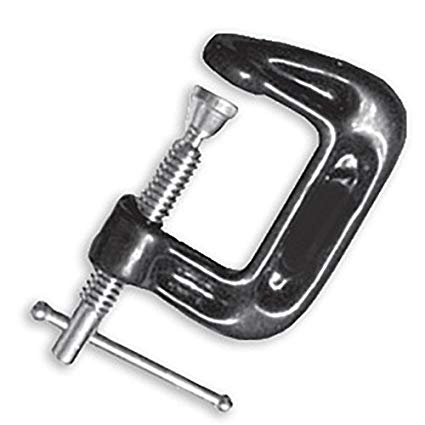
For those not aware of very old development lingo, the Clamp is a term used in City of Heroes development for the to-hit formula. The basic idea was that any time you tried to attack something, the game would do some math and you’d see whether or not you successfully hit your opponent. No matter what you did to your chance to hit, you’d always have a 5% chance to miss, and that’s the ‘Clamp’ of the discussion.
It’s a pretty silly thing to get angry about because you might be familiar with this as a basic critical miss mechanic. This mechanic is common to a lot of tabletop games, and really, common to a lot of videogames that are just so gauche as to not tell you they’re doing math when they try and shoot you.
I’m not going to get into an argument with this person about why the Clamp should be around, or why their suggestion to get rid of it in a game that otherwise works fine is nonsense, but it did make me think about addressing why you even want a critical failure system in a game at all.
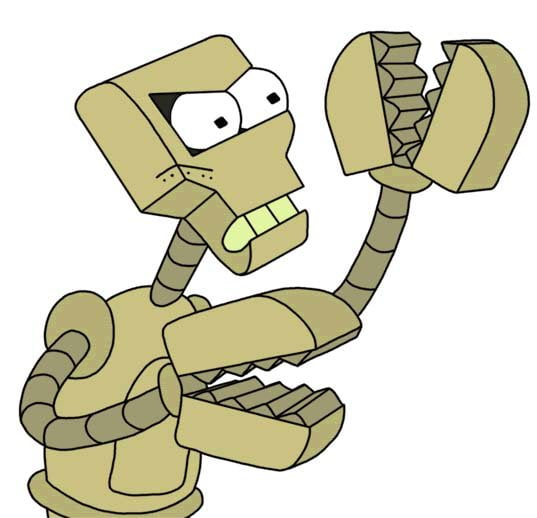
The thing this Clamp did for City of Heroes in combat is what it does in all other games that use this system for combat: It stops combat from ever reaching a place of being potentially identical. When you throw a fireball into a group that it will probably kill, the fact you can’t be sure who will survive is important to make sure that your turn has some variance in it. In City of Heroes, where you’re making hundreds of attack rolls over sequences of seconds-long combats in minutes-long missions, these little bumps of the unreliability mean that you’re still making decisions and choices while you play, because you can’t be sure who will run and when.
Now, that’s not to say critical misses or absolute failures are a good thing in all games. One of my favourite designs in Blades in the Dark is because in that game, ‘success’ seems very attainable – it’s usually something like a 1/2, with some complications, and any extra dice make it more likely you’ll get something like a success. The pool of dice you roll is never very big, and that means you’re likely to get hit with random variance and then that failure becomes a thing.
Similarly, you can check how the kinds of times you want to make those checks. In City of Heroes, these rolls to see if you succeed or not are made when you want to attack something, but not when you’re seeing whether or not you successfully craft and object you want for your build. It’s not that this is a game where you can always fail, it’s a game where you want to represent combat as being about an interesting experience, whereas crafting is more about just getting what you want when you pay for it.
These systems are not used without a reason, and the reason to use them is challenging to explain to players. Players may think they want the game to never let them miss, but if you give them that game, they may find it more boring, less interesting but never know exactly why. It’s a really dark art, tuning player experience, and there’s going to be things they don’t like that they don’t know why they don’t like.
April Shirt: Etoile League!
I considered doing something special for April on this month of trying to express more of me. At the same time, I just couldn’t think of anything that worked – not really. That stuff doesn’t happen under pressure for me, and for a bunch of my shirts (like Ray of Tsunshine) where I want a copy immediately after making it.
Instead, then, something else. Someone else.
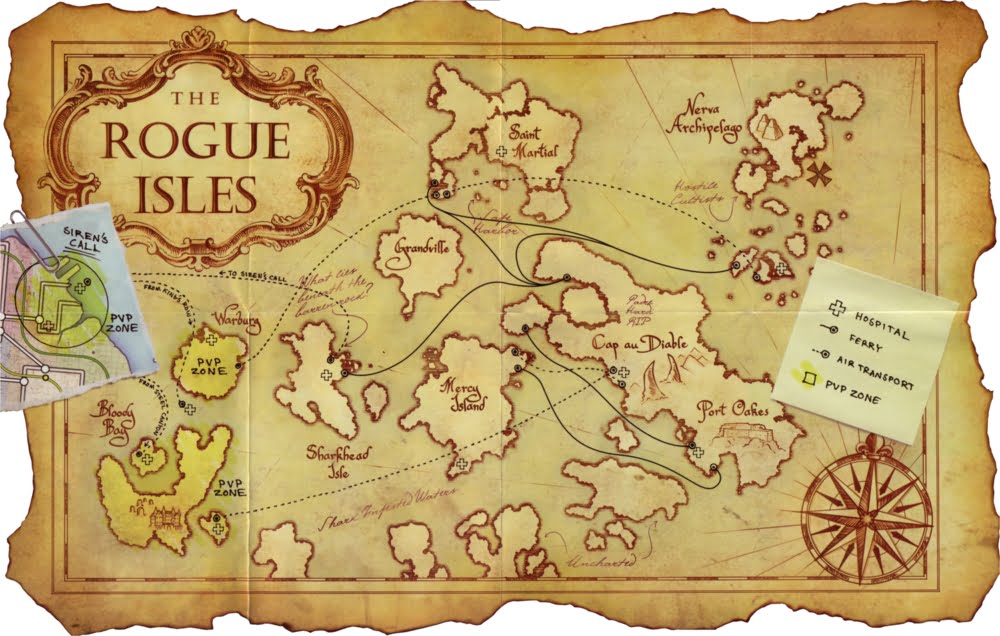
This week would have been the fifteenth anniversary of City of Heroes. I’ve already made shirts that celebrate the universities across Paragon City. If you know that setting, you’ll know that there’s a bias, where four of the Universities were in hero zones, and one in villain zones.
I always found the culture of City of Villains interesting – literally the culture. If you never knew the setting, there was one area, the Etoile, which was known as the ‘City of Villains.’ It was overseen by a corrupt superstate, and had all these different zones with really specific cultural notes. Mercy Island was plagued by poisoned water and a snake cult; Port Oakes organised crime and ghost pirates (seriously). Cap Au was a super-science city with a demon in the reactor powering it up. Sharkhead was a steelworks where the literal ghost of an unjustly slain labor unionist rose up to kill guards. Saint Martial was a casino town, with the wealthiest of jerks in charge.
And, well, based on a conversation with a friend, Jeb Wrench, about the nature of sports in poor communities near America, with limited space, we came to the conclusion that the kids of the Etoile probably play basketball. Where there is play, there is organised play. Where there is organised play, there will, eventually, be branding – even if it’s a bit cheap, a bit weak. And thus… we get this.
There was also Grandville, Nerva, and Bloody Bay but those are tricky and I’m already making five shirts here, dangit.
Top Dog
Games are filled with opportunity for discovery. When you’re exploring a device with low stakes, you are in that time, playing with it – seeing the boundaries of what it allows. It is the play of a gear, more than the play of an actor. Play is how we find the limits of things.
Okay, rewind. A story. A story of a specific thing in a specific place.
Back in the day, in City of Heroes, when you first made a character, you’d complete a short little tutorial, and be dropped in front of the steps of the Atlas Statue in Atlas Park. It looked like this.
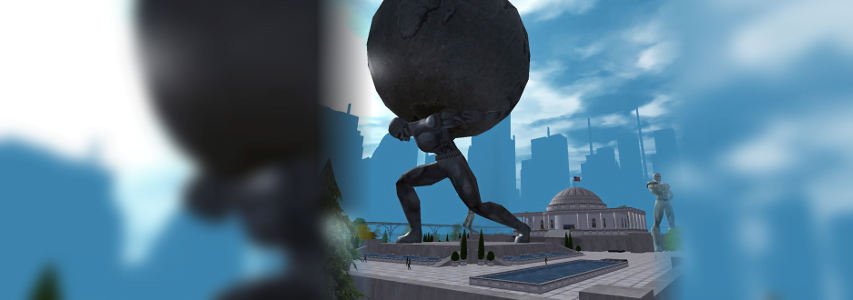
It’s a common thing for players to talk about, the first moment the got a flight-related travel power. It was usually hover, but sometimes it was a jetpack. However you did it, when new players gained the ability to leave the ground, one of the most common things they’d do is use that power to fly up to the top of the Atlas Statue and look at what was there.
What was up there was an exploration badge.
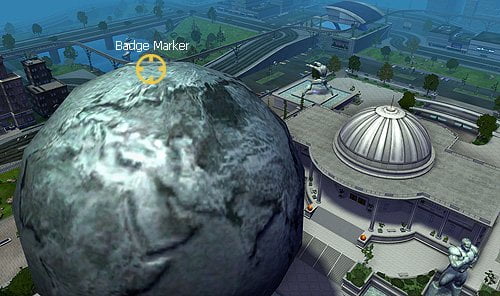
These badges were a bit like achievements. You could put a badge on your character and it’d display under your name. More important than what this badge could do, though, is what this badge did.
When you explore, one of the most disappointing things to find is nothing. I have memories of struggling up mountains in World of Warcraft and New Vegas and finding blank textures and no reaction to my presence, a sign that I hadn’t actually achieved something difficult but just had done something the developers had never expected. That taught me to stop trying those things, to stick to the path, to give up on exploration and excitement. I turned the gear all the way in one direction, and the game didn’t react well to it, suggesting I never do that again.
In City of Heroes, you tried something, and the game found you when you got there, and said hey, yeah. This kind of thing works.
The Top Dog badge encouraged players from the earliest point to always look on top of things, around things, to think in terms of what counts as worth exploring. It was a good idea, and I think that it rewarded players for being playful with the world.
Beast Mastery Masterminds
So back in City of Heroes there was this type of character you could make called a Mastermind.
Masterminds were a pet class – you could get three tiers of pets, which were constant; you didn’t have to manage their upkeep, and you could buff them like they’re players. They also had some mechanics about directing damage around passively, so you didn’t play like an RTS, but you instead were a superhero villain ordering your goons to beat people up. It was a great archetype, and everyone I knew with one was proud of what they could do with it.
Right at the end of City’s life, we got a brand new power set for the Mastermind: The Beast Mastery Mastermind. Instead of soldiers or ninjas or robots, you got to command a horde of animals, like you were something people misunderstood about Kraven. Point is, you got to be cool and have a big pile of animals around you.
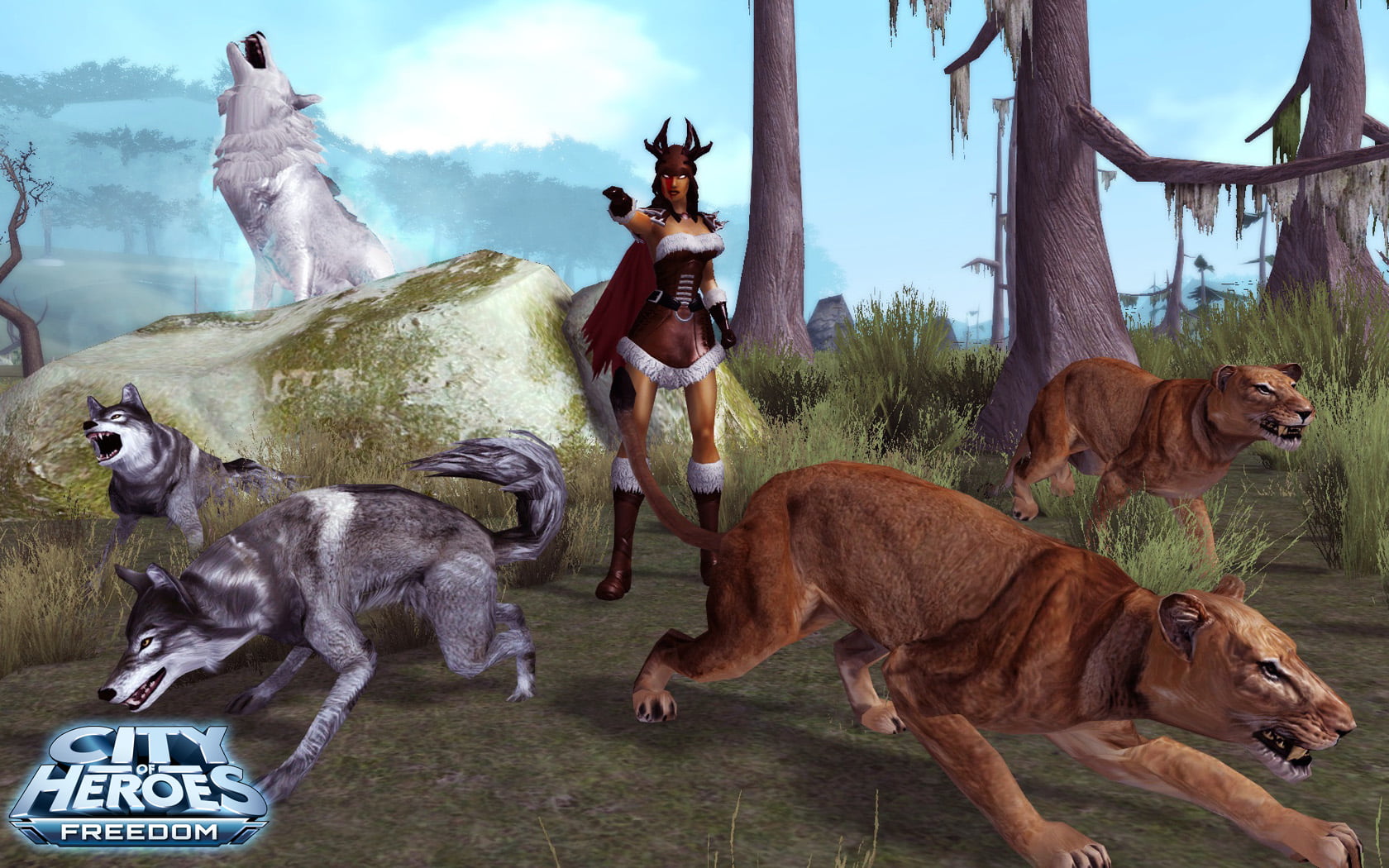
The thing with the engine in City of Heroes is that it was a little bit, kinda mediocre about some things. The only way to stop the existence of a game entity was to give it a kill order – so pets you summoned, little robot pets, would die when they timed out, and they’d explode. When the Mastermind was originally conceived, on City of Villains, if you ran into a door, your pets would run in the same door. But if you disappeared, they’d get a kill order. No big deal, that’s part of why the City of Villains, the big transport network which used the ‘disappear’ command instead of ‘go into a door, then disappear’ command, was a ferry, so you’d run into the ferry, and your crew would all collapse dead inside it and fall through boxes and stuff.
But when you went to Paragon (as you could by this stage) and ran around with a Mastermind, any time you used a train, your pets would get that kill command. You’d hop on a train and move on and all blissfully unaware, as you arrived, that the pets you had now were newly summoned for your new region of map. No big deal, right?
Thing is, if you weren’t the mastermind player, what do you see?
You can guess, right?
And making it worse, the release of a new set provoked a huge influx of new people trying out this new Mastermind set, and often whole teams of them. So you could walk into a train station and see dozens upon dozens of dead animals.
The Scope of Paragon City
It’s been five years, more or less, since the end of City of Heroes. The game found itself a major, important part of my experience, of my learning as a person, as my interactions with culture and with a rare kind of big, creative space.
As the time goes, as it filters on by, things come back, memories, reminders… and sometimes, the things you remember are… strange.
Like…
City of Heroes was big.
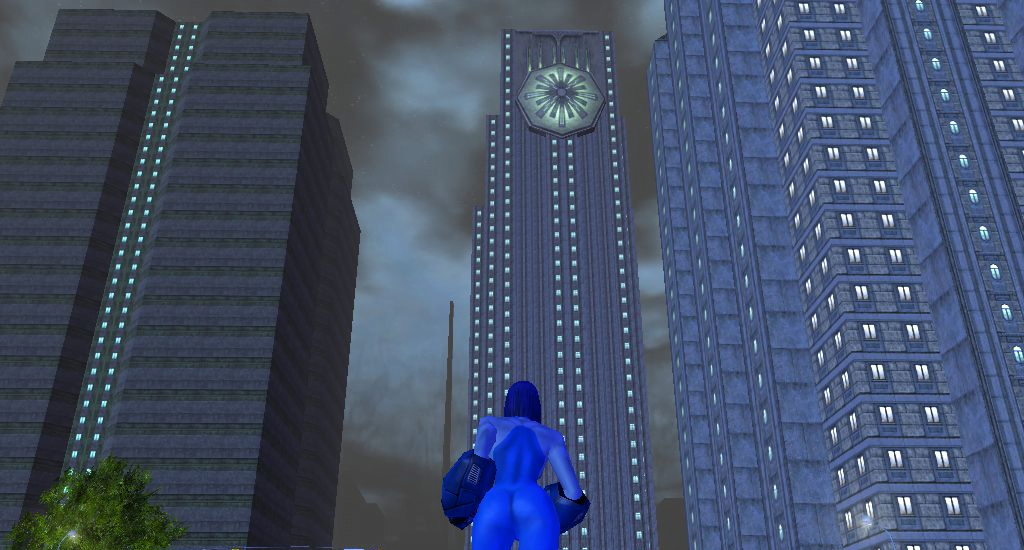
It was a little talking point amongst us – which was meaningless – that the biggest zones in our version of the game was Independence Port, which was so vast that you could fit the continent of Azeroth or Durotar inside it.
That’s nonsense, of course – the comparison just isn’t meaningful, and being ‘bigger’ isn’t any kind of better. But it put me in mind, as I remembered this point, of the long, slow walk down Faultline streets before I had a travel power, fighting my way through random spawns to make my way to the door at the far side of the dam.
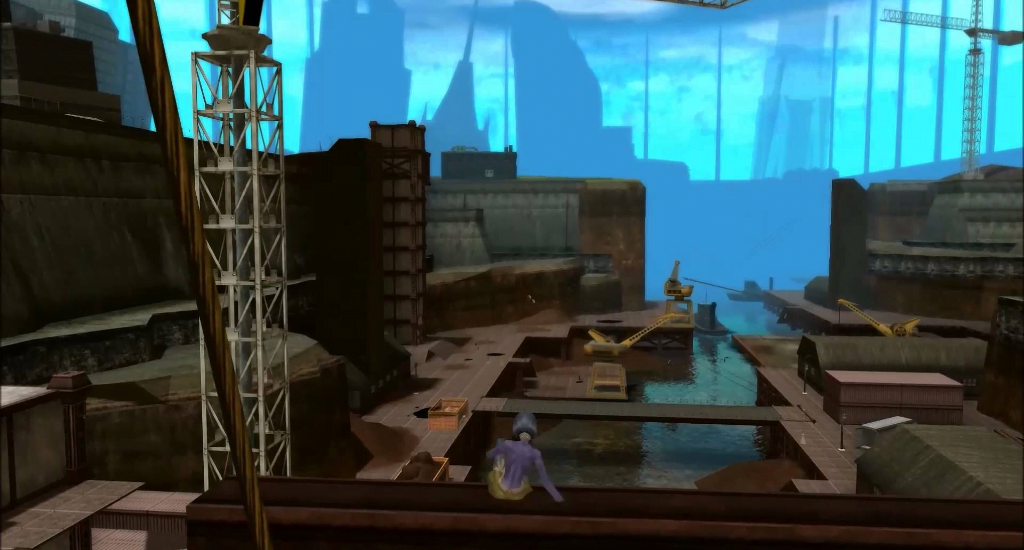
It made me remember Dark Astoria, my Dark Astoria, the Dark Astoria that mattered to me, where the quiet, hollow streets, full of fog and silence and zombies werer my crisscrossing pathways where I methodically entertained myself by smashing into pack after pack after pack, destroying, moving, again, again, again, filling my pockets, running onwards.
It made me think of the spaces between islands, when you were hunting badges with a half-remembered idea of whereabouts you were supposed to going.
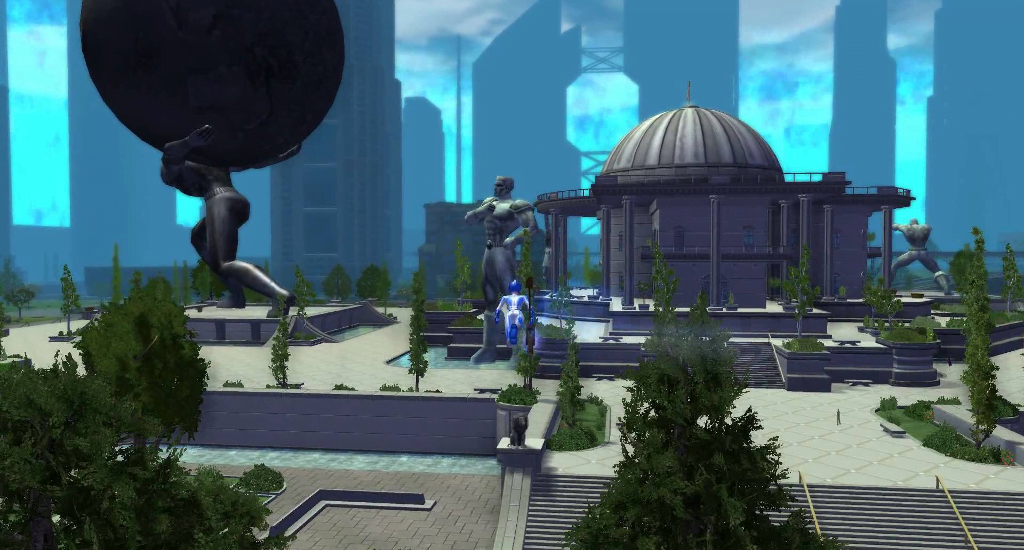
It made me think about flying, about the way you could move so fast in that game, and yet, despite the speed of it, you could travel so far and so fast… and there was still space for you. The distance, the sheer size of that game.
I still miss it.
I miss being able to take my friends and show them this great, big space and say look at this cool space, where you can create your own thing.
Ah well.
All images here were obtained from Google Image Searches and several went to defunct photobuckets. Sorry! :(
New Shirts! Paragon City College Shirts!
Hey there friends! Do you remember City Of Heroes, and its many different university campuses, where you could go to craft inventions in a relatively peaceful environment, without fear of being shot at? Well, we have some cool t-shirts designs you can wear to signify your affiliation with one of those places!
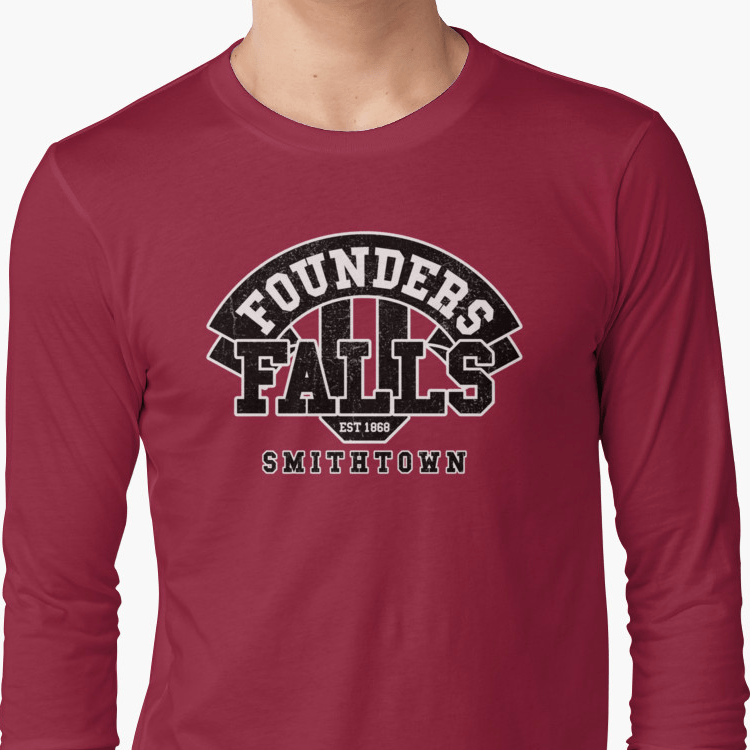
Founders Falls was the oldest suburb in Paragon, and apparently, one of the snootiest. It had canals and bridges and arches, and was proud in the esteemed age of the area. It also had snipers in suits on the rooftops, which was a thing.

Steel Canyon was your lowest-level University you could access, heroside. It was a region full of skyscrapers and powerful businesses, with a self-image about being forward-thinking and recovering after the Rikti War.

Did you know that City of Heroes had a Creepy New England Town? And that town had a whole university in it? Check it out!

Blueside didn’t have the only Universities in-setting. Also, redside, Cap Au Diable, the personal domain of an evil super-scientist named Doc Aeon, had a university too!

And finally, here’s a little special one for the Kings Row diehards. Sure, we didn’t have a university, but we had spirit, damnit!
These designs are available as shirts, mugs and stickers on my Redbubble store. Please, do go and check ’em out!
The Day Without Crime 2
I almost feel like it’s not worth saying this all over again.
But in my personal little lexicon, it’s one of three important dates at the start of December. First, it’s a friend’s HRT birthday. Second, it’s the Applerversary, the year anniversary of #ApplesForEmi.
And third… the end of City of Heroes.
It’s been four years, which is to say, I’m halfway towards having had more time after City of Heroes than I had in City of Heroes. I can remember elections held while I was playing that game. I can remember important events, meeting people, losing people, the arc of my personal life and growth, the way that I shifted and moved around that game.
… and here I am, thinking about this place that disappeared at the flip of a switch.
The Day Without Crime
On December 1, a few moments past midnight, the new day dawning, 2012, City of Heroes shut down.
For some of us, it was the middle of the night. For some of us, it’d been the afternoon. Fox and I had climbed to the top of a Kings Row skyscraper, as Backbeat and Harlem, who stood there waiting for the moment the server shut down. We didn’t know what to expect. Didn’t know what it’d be like. Would chunks of the sky corrupt? Would the game client continue on dumbly, unaware of what happened? Would the world end with a bang, or a whimper?
The last words I saw in that game, in that space where I had spent six years of my life, was the shouting of Backbeat, towering and fierce fist-fighting woman who had raged in the name of love, was
THIS
IS
MY
CITY
It was three years ago, today. We stood, numb, in the wreckage. A gang of roleplayers, who had connections outside the game, tangling up on Formspring, in chat programs, in private communiques and emails, a interconnected patchwork quilt of people who didn’t know they knew each other or what they meant to one another, but able to trace threads of red and blue to one another.
And the story went on.
It had to. Did we just shut down what we’d created when the game was gone? Some of us did. Some of us just straight up shuttered the accounts the second the game ended. Others, like me, didn’t want to surrender. We’d been melancholy since the announcement, since we’d learned our time was limited. People had been going out and patrolling less. There were fewer people touting their achievements. Everything had the pallor of a doomed world.
I had written a book-of-sorts as the game closed. The denouments of over forty heroes, the incidents that came after the game ended, as their stories continued. Some happily-ever-afters. Some new chapters. A eulogy for something I’d loved. I always saw myself as caring about the world and wanting to make it feel real. For my actions to have an impact in a shared, communal playspace, and for other people to find it easier to believe those things happened. It was a work, and I loved doing it. People did patrols, and they did things, and we spoke about it as if it was a task that needed doing. When someone played a lot one day, I spoke of it as if there had been a spike in activity, that they were responding to a problem. Double XP weekends were ‘black weekends’ – times when there were multiple culminating plans and plots, ruining so many things all at once.
What did it mean, then, that on December 1, nobody logged on?
That’s when I, in our little magic circle of shared storytelling, used the characters I had to share one more story. That after years – in some cases decades – of patrolling and pushing and fighting against the forces of evil in Paragon City, there had been finally, one day – one day – without a single reported incident of a crime to the police. That villainy had been beaten back enough, that there was some respite. We had done some good. We had made things, at least a bit, better for our little world.
The group fragmented, splintered, and dissolved after that. I moved on, as I had to. My friends moved on to other things. We tried other superhero RP venues, but to my eye, they all fell apart. They just didn’t work. I don’t know why, per se. They just didn’t click. Maybe I’m too fussy, maybe other people just do their own thing and I’m not in it.
But December 1 is a day when something that mattered to me, enormously, died. And it began the not-that-slow death of a community that followed after it.
Carcer’s Christmas Eve
Talking with Hoodiejoy today reminded me of this little story from the last Christmas City of Heroes had, just after the game was shuttered. It’s a story about what one character, Carceri, did, and it featured his friends. I’m putting it here because this is basically an enormous tweet.
Move along, nothing to see here.
Characterisation Through Questions
Alright, hold onto your hats, folks, this is some deep nerdery. Around three years ago, now, I was an active participant on Formspring, playing multiple superhero characters as a way of augmenting City of Heroes in-game roleplay. When Formspring went through a scare that almost shut them down, they let us download archives of our characters’ work. With the number I had, I grabbed the long ones, with the vague intention I’d do something with them later.
Well, thanks to the magnificent Adrienne, I’ve been able to turn these multi-file messes into single, easily read streams and I thought these, in particular, were worth preserving somewhere. In order, we have:
New Disaster – A bisexual young neophiliac with a misandrist mother and a coven of literal witches around him. Cole is preserved here more for the historical curiosity of him, and knowing that to at least one person, he matters a great deal.
Snared – Ryker’s story as outlined here was a lot of complex parts crashing against one another. The game didn’t make events work the same way they would in a story – everything happened in this slow-motion floe-like kind of way, it was up to you, the player character, to give your stories a sense of pace. Ryker was trying to take care of a little sister, deal with being orphaned, and a superhero, and an illegal immigrant, all at once. Also, Ryker was created before I knew that cops in America are kind of dicks.
Carceri – I made Carcer in a rush and in response to other players’ behaviour and stories. I never made him fit, he never felt as loved as I wanted him to – a bitter, seething little lump of coal, put on someone’s shelf or in someone’s roster. I loved him dearly, though, and I know there’s no other place he can possibly belong.
Swivel – Cyborg boy with an AI in his head that was deliberately trying to fuck with him. Swivel was a wonderfully nerdy character, and I really, properly enjoyed playing him on Formspring. The character people met in-game either was ‘in uniform’, wore a mask, and was a completely wordless machine of destruction, or was out of uniform and looked like a scrawny dork who had an absolutely deblitating stutter. Taking someone who normally couldn’t speak, and giving him a space where he could talk, and talk about the internet and videogames and such? It was lots of fun.
Cearmaid – And here’s the sort of magnum opus of this. Cearmaid is the character who became the background texture, the landscape, of all this formspring stuff. More than any other character, Cearmaid came to live and learn and be shaped on formspring. More people knew Lock than ever met him. I don’t know how to describe this character now. It’s too big, I don’t have words for it.
*
Now I warn you, these archives are basically only interesting if you want to watch my superhero roleplay characters play question-and-answer with randos, or even, sometimes, with one another, which I am sure is onanistic in hindsight. Still, there’s something about these archives I deeply love, some form of expression I can’t see elsewhere, or show in any other way.
Maybe there’s something in here to read or be amused by.